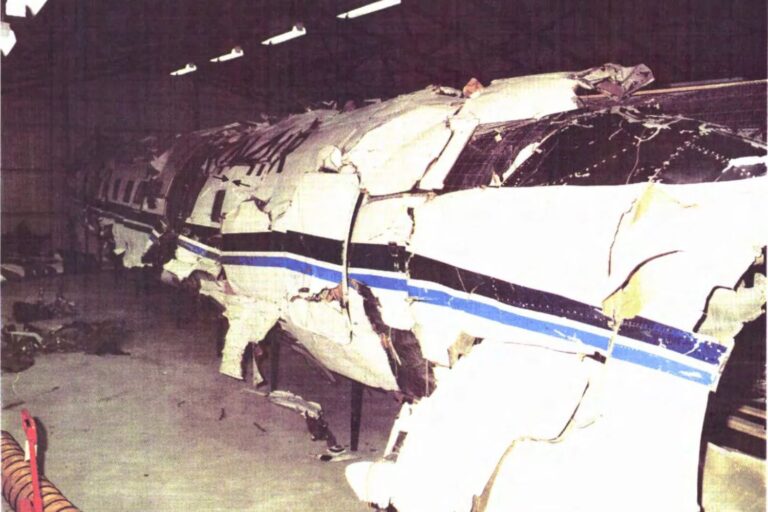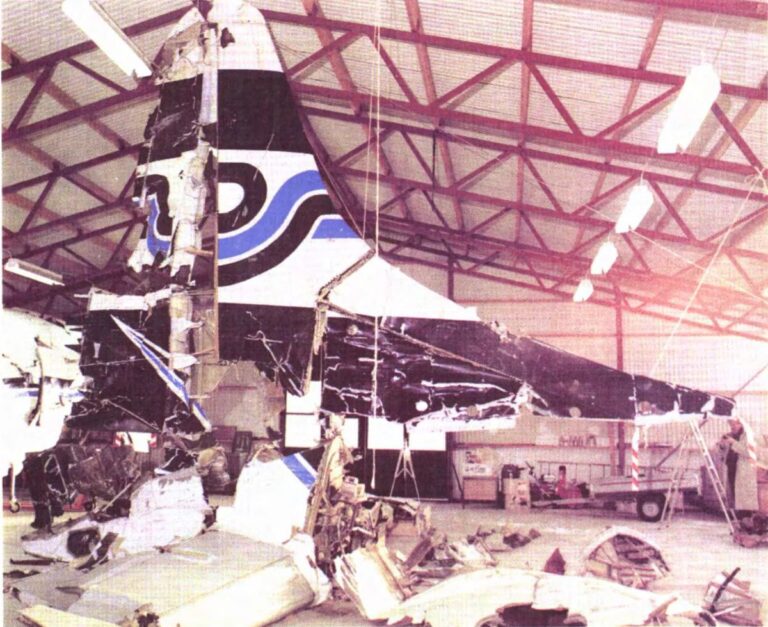In 1989, Norway experienced one of its worst ever air disasters, caused by the smallest of parts—a tragedy that ultimately led to significant changes in aviation safety worldwide.
Flying in Norway is an everyday part of life, given the country's rugged terrain and remote communities. For many Norwegians, air travel is as routine as taking a train or ferry, and the vast majority of flights operate smoothly and safely.

However, when things go wrong, as they did with Partnair Flight 394, it’s essential to understand the reasons behind these rare events.
Each one of Norway's worst aircraft accidents holds vital lessons that contribute to the continuous improvements in aviation safety, ensuring that air travel remains one of the safest modes of transport available.
The crash of Partnair Flight 394 serves as a poignant reminder of how minor oversights can lead to catastrophic consequences and how the lessons learned from such incidents can transform an entire industry.
Partnair Flight 394: A Routine Flight Ends in Tragedy
Partnair Flight 394 was a chartered flight operated by the Norwegian company Partnair, flying from Oslo to Hamburg, Germany. At the time, Oslo Airport was located at Fornebu, to the southwest of the city, which has since been redeveloped into a business park.
On board were 50 passengers and five crew. The passengers were employees of the Norwegian shipping company Wilhelmsen, on their way to a ship naming event in Hamburg.
The aircraft, a Convair CV-580, was a sturdy, twin-engine turboprop commonly used for short regional flights. Despite the routine nature of the journey and the experienced crew, the flight tragically ended in disaster.
The short flight seemed routine until the aircraft suddenly broke apart over the Skagerrak Strait, off the coast of Denmark.
The wreckage plunged into the ocean, leaving no survivors. Approximately half the employees of the Wilhelmsen head office in Oslo lost their lives in the incident.
The Investigation Begins
VG journalist Jan Ovind said that sabotage was initially suspected, a belief shared by one of the Norwegian inspectors and a Danish rescue team leader. The incident occurred just months after the Lockerbie disaster, so a bomb was foremost in the minds of many.

Also suspected was an assassination attempt gone wrong. Then Norwegian prime minister Gro Harlem Brundtland used the plane several times on the campaign trail just a few days before the incident.
Investigators tested the wreckage for any traces of explosive residue, and indeed, they found small amounts of the military explosive RDX. However, the concentration was far too low to suggest it had come from a bomb or missile.
The lead investigator believed the traces were more likely due to contamination, either during the recovery process or from the wreckage lying on the ocean floor. No fragments from a bomb or missile were found in the bodies, and the wreckage itself showed no signs of exposure to an explosion or fire.
However, the investigation would uncover a shocking chain of events that led to the crash, revealing critical issues within the aviation industry that had gone unnoticed.
The Smallest of Parts: The Cause Unveiled
Investigators from Norway and other international agencies painstakingly combed through the wreckage of Partnair Flight 394, hoping to uncover the cause of the tragic crash.
The investigation revealed a chilling discovery: the failure of a series of bolts in the tail section of the aircraft, which were not up to standard. These bolts, intended to secure vital components, were discovered to be counterfeit.
They were significantly weaker than legitimate parts and far below the necessary safety specifications, rendering them unable to withstand the forces encountered in flight.
The presence of counterfeit bolts alone was devastating enough, but an additional factor worsened the situation: the Auxiliary Power Unit (APU) was in operation.

APUs are small engines used primarily to power the aircraft while on the ground, but they can also assist in flight. On Partnair Flight 394, the APU was being used to provide an alternate source of power, as one of the aircraft's two main power generators was defective.
Norwegian aviation rules stated an aircraft must have two sources of power in order to take off, so the crew put the APU into action. However, the additional vibration caused by the APU, combined with the already compromised bolts, created the perfect storm.
The weaker counterfeit bolts could not handle the added stress, leading to a severe structural failure.
The aircraft’s tail began to vibrate excessively and, within moments, this vibration escalated into a catastrophic failure. The aircraft broke apart mid-flight, leaving no chance for recovery or survival.
A Wake-Up Call for Global Aviation
The findings sent shockwaves through the aviation community, highlighting a glaring vulnerability in the industry’s supply chain: the presence of counterfeit or substandard parts that could easily evade detection and compromise safety.
The widespread presence of counterfeit parts circulating within the supply chain prompted an urgent re-evaluation of quality control practices and regulatory oversight.
Many people running parts brokering companies were arrested. In the wake of this tragedy, authorities worldwide implemented stricter regulations to prevent similar incidents.
One of the most significant changes involved introducing stringent certification and tracking processes for every aircraft component.
Airlines and manufacturers were now required to verify that each part, regardless of its size or perceived importance, met rigorous safety standards and could be traced back to its original manufacturer.
These measures have since helped ensure that counterfeit or inferior parts are detected before they reach an aircraft, enhancing the safety of air travel globally.
The Legacy of Partnair Flight 394
The crash of Partnair Flight 394 was a devastating event, but its legacy has had a lasting impact on aviation safety.
The lessons learned from the disaster have led to safer skies for millions of passengers, reinforcing the importance of vigilance and rigorous standards in the industry.
For Partnair, the disaster proved pivotal. Already in financial difficulties, the airline filed for bankruptcy little more than a month after the crash.

